Baran District in South East Rajasthan is little known by the outside world but the rock paintings from here indicate an extremely long history. Remains of temples for example at Kakuni, Atru , Vilasgarh/Bilasgarh and Bhand Devra and impressive forts at Shahbad and Shergarh indicate a diverse history incorporating Buddhism, Jainism, Shaivism and Islam. The Yupa pillars from Bhavna village which are now displayed in Kota indicate the revival of Vedic religion in the 3rd century. The Ramgarh meteorite impact crater is of world importance.
For a long time, the need was felt for a museum in which the numerous sculptures scattered around at these temple sites could be displayed. In 2008, the Government transferred the Divisional Magistrate’s bungalow in the old civil lines to the Dept. of Archaeology and Museums. In 2013-14 funds were available for its renovation as a museum. In 2016 the brochure was printed and finally, on August 20th 2020 the Museum was inaugurated virtually from Jaipur by the Chief Minister during the lockdown. The museum has yet to be added to the Rajasthan museums website.
Finishing touches like signs on how to find it are not there yet and so apart from a few locals, there are hardly any visitors. The museum displays good collections of sculptures, paintings, weapons and decorative arts, and photos of local temples and forts which are worth a visit.
Some sculptures displayed at the museum have come from the Bandh Devra Temple which is dedicated to the tantric tradition of Shiva and was built in the tenth century in the style of Khajuraho. It is situated in the middle of the meteorite impact crater at Ramgarh which is 40 km from Baran and which is the second-largest such crater, at 3.5km diameter, in India. Various other sculptures displayed here are from Bilasgarh which was once a fine city but was destroyed on the orders of Emperor Aurangzeb after a Khechi princess from the ruling family of Bilasgarh refused to marry him and preferred suicide. The spot near the Bilas River where she ended her life is called Kanya Dah, near Vilasgarh a treeless desolate place strewn with rubble about 32kms from Baran.
Although the sculptures are local, the rest of the contents of the museum have been collected and displayed with an attempt to introduce the local people to some Indian crafts. There are some very good examples of the Jaipur School in the Miniature Art Gallery and there are more examples of Bundi art in Baran than in the Bundi museum. Baran is situated in a tribal belt and many local people are Sahariyas. They have a token representation in the Folk Art Gallery in the museum.
This content has been created as part of a project partnered with Royal Rajasthan Foundation, the social impact arm of Rajasthan Royals, to document the cultural heritage of the state of Rajasthan.
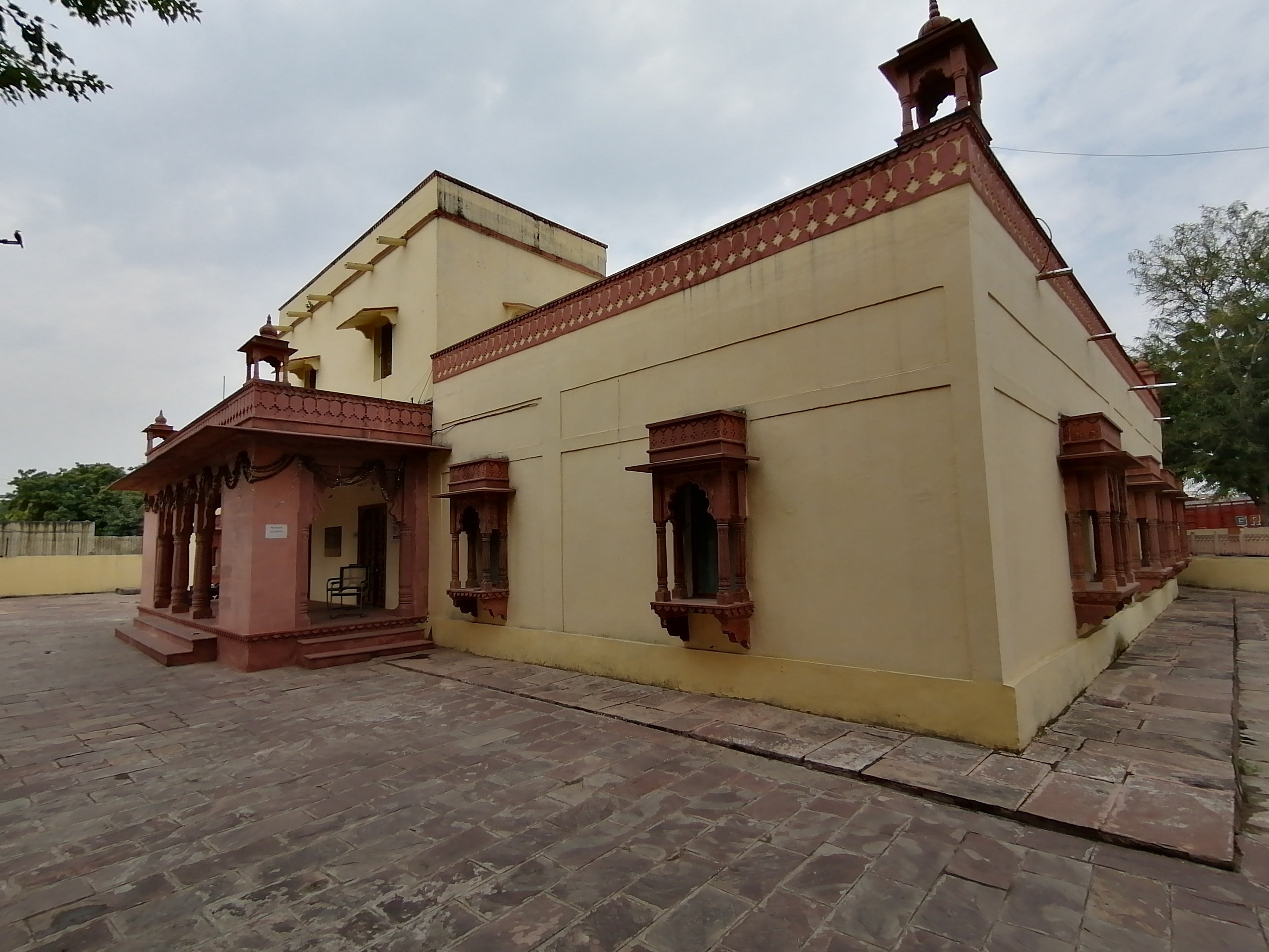
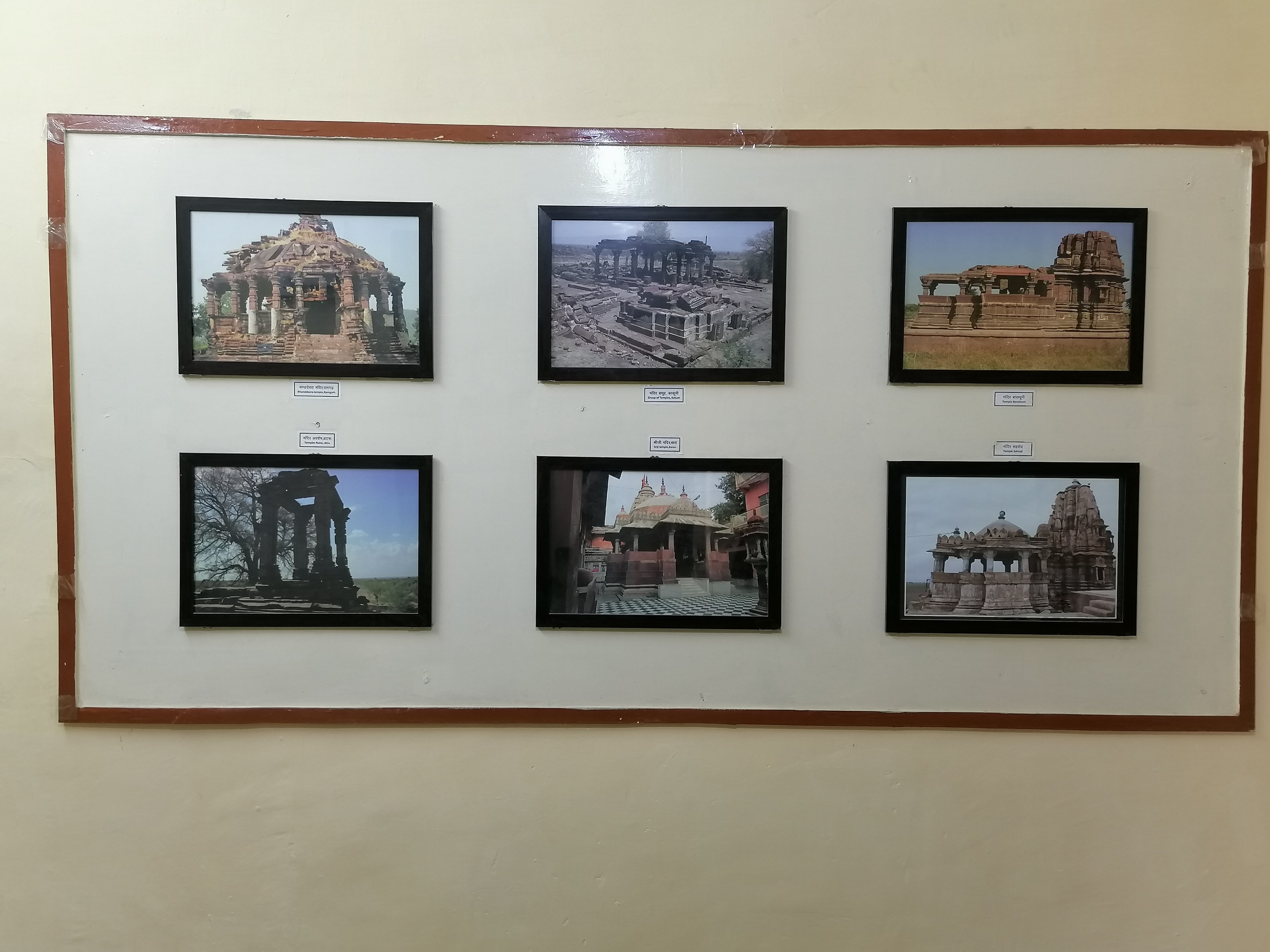
Photos of temples which are the source of the sculptures displayed in the museum.
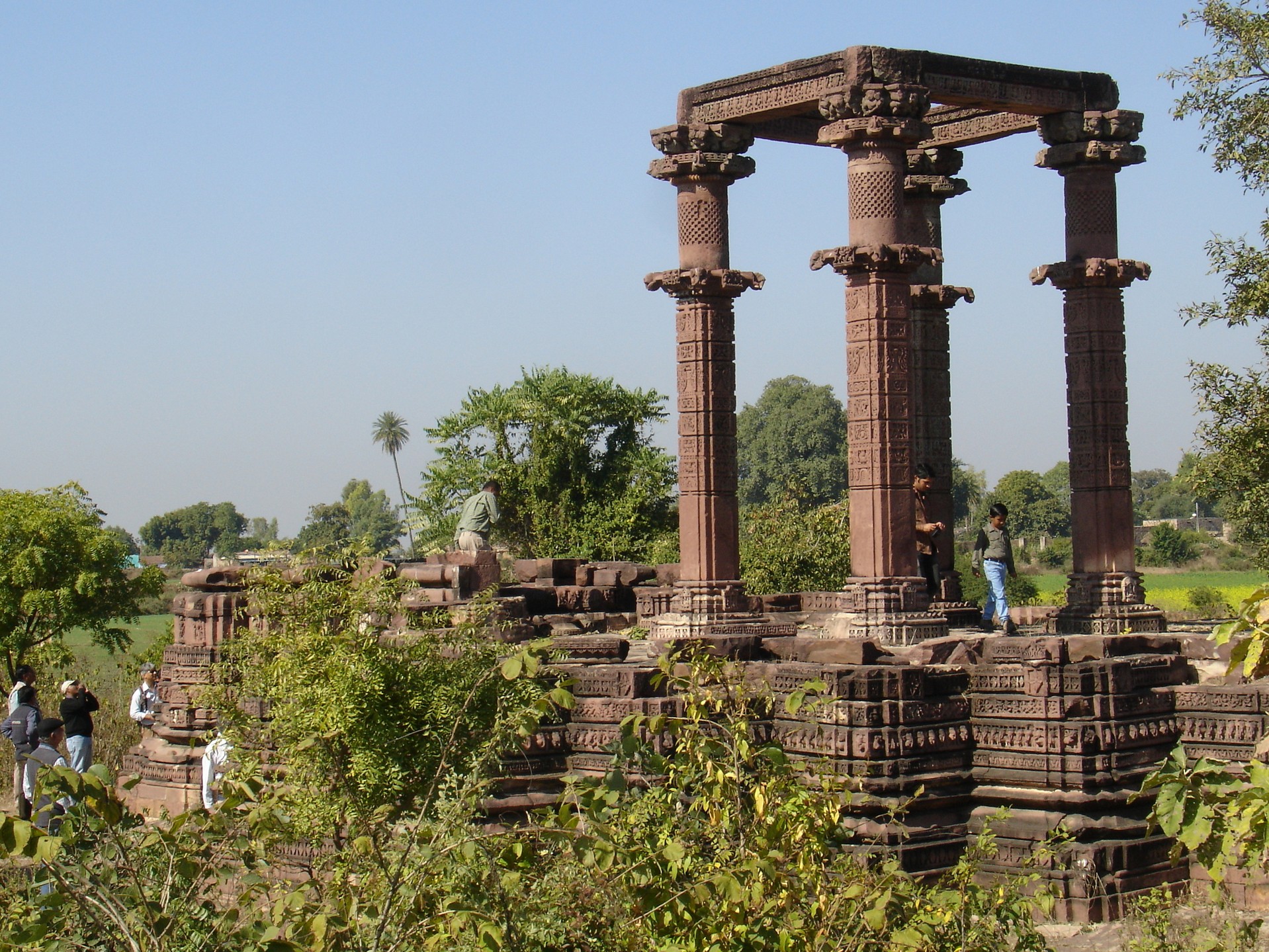
Photo of the temple at Bilasgarh said to have been destroyed by Emperor Aurangzeb. Built 9th-12century AD.
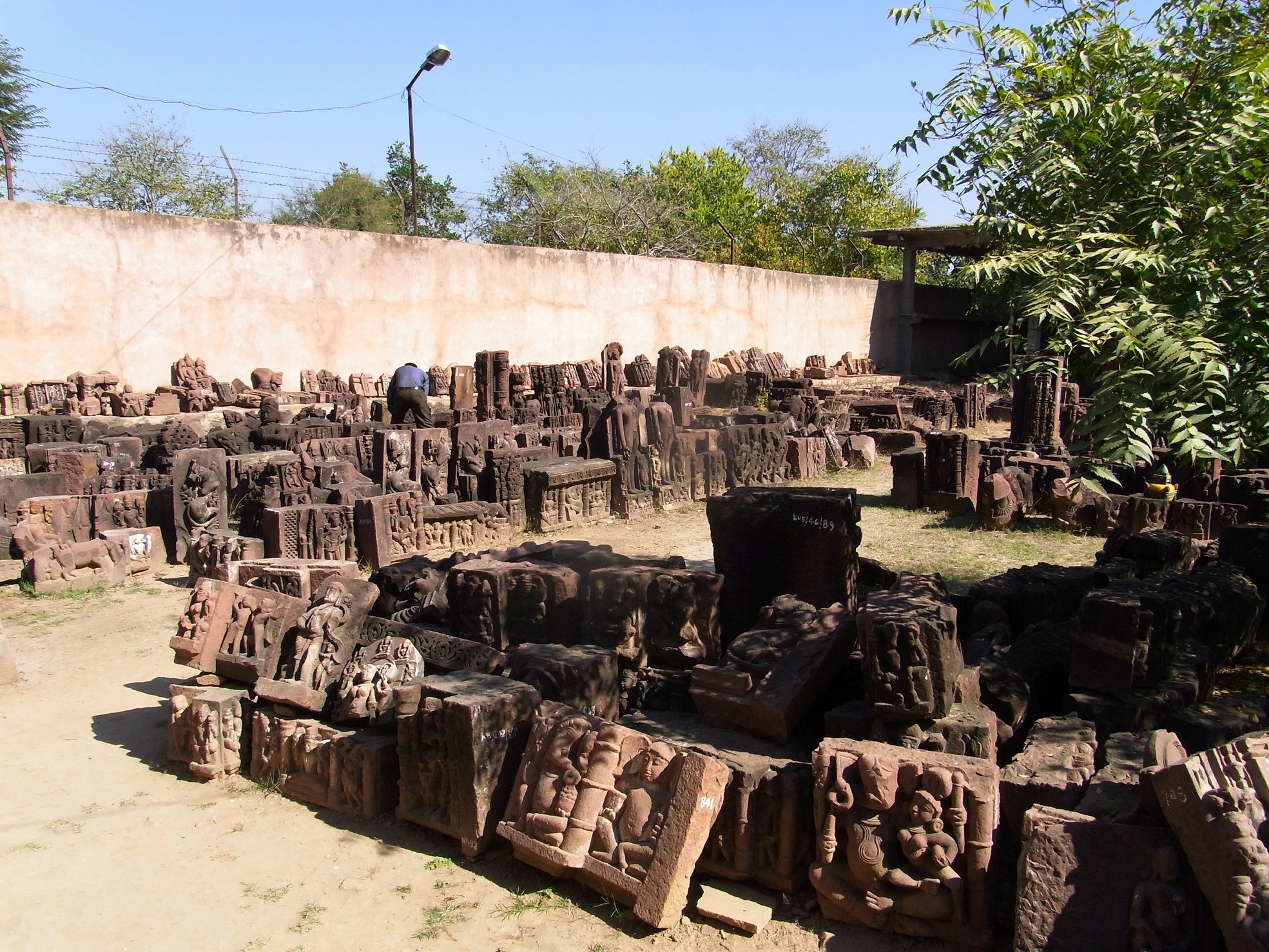
Sculptures stored in Bilasgarh village waiting for a local museum to be built.
Photo showing the location of Bhand Devra 10th century temple in the middle of the 3.5km meteorite impact crater at Ramgarh 41 km from Baran.
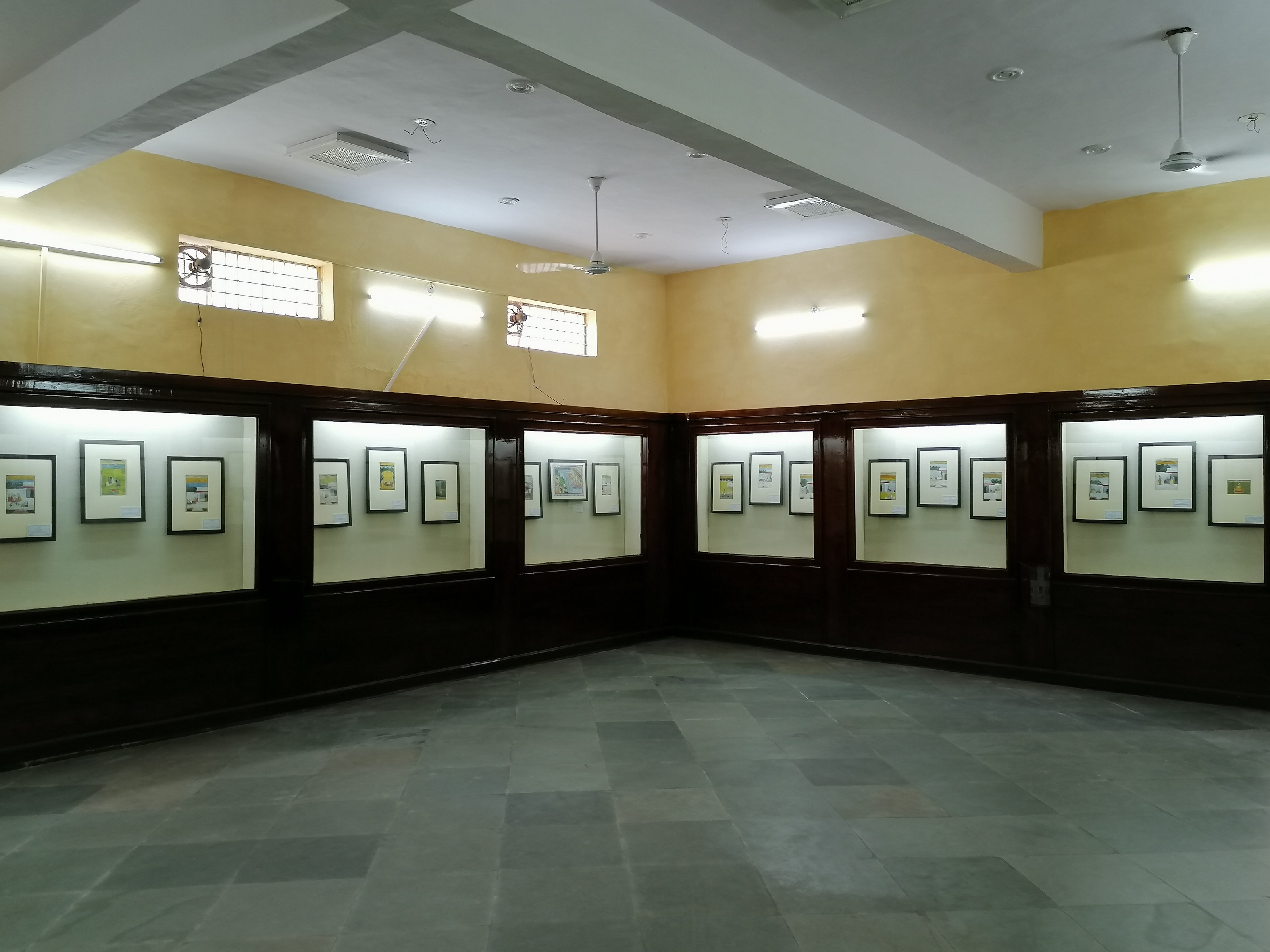
The paintings are from the Jaipur and Bundi schools and are from the 19th century. A Barahmasa series from Bundi is based on the poems of the poet Kishavadas and illustrates the Indian seasons.
This 19th century painting from the Jaipur school shows Shah Jahan sitting on a golden throne and surrounded by ‘youthful ladies and tame lions’.
This 19th century painting from the Jaipur school shows Vishnu resting on the coils of the many headed Sheshnaga. Laxmi is massaging his legs. A lotus coming out of his navel bears Brahma.
This sculpture shows the same subject carved in stone in the 12th century from Vilas (Tehsil Kishanganj). You can see Brahma on the lotus which is emerging from Vishnu’s navel. There are similar sculptures in both Kota and Bundi museums.
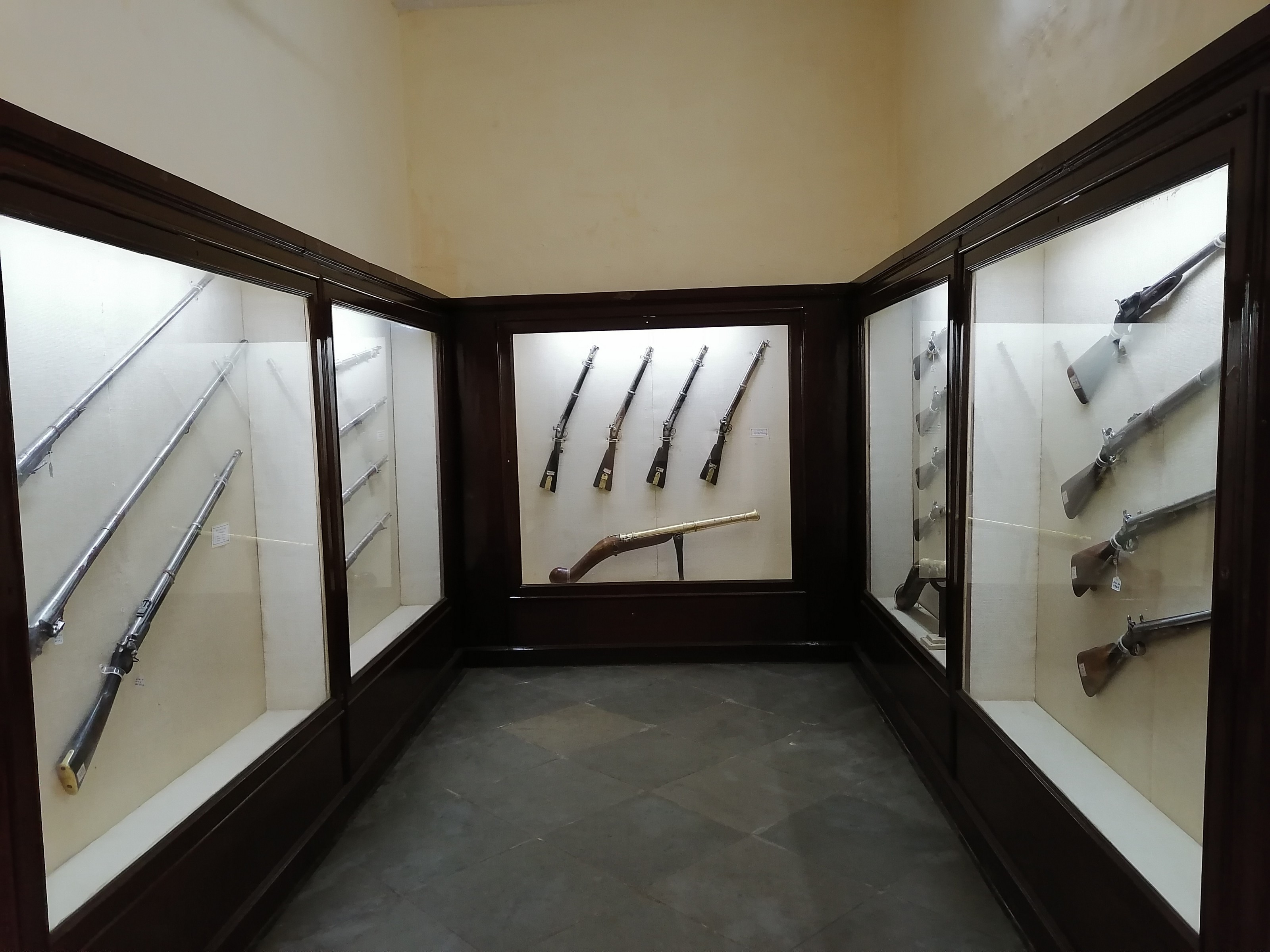
The weapons gallery showing matchlock guns, arrows, pistols and a camel gun known as a jambura.
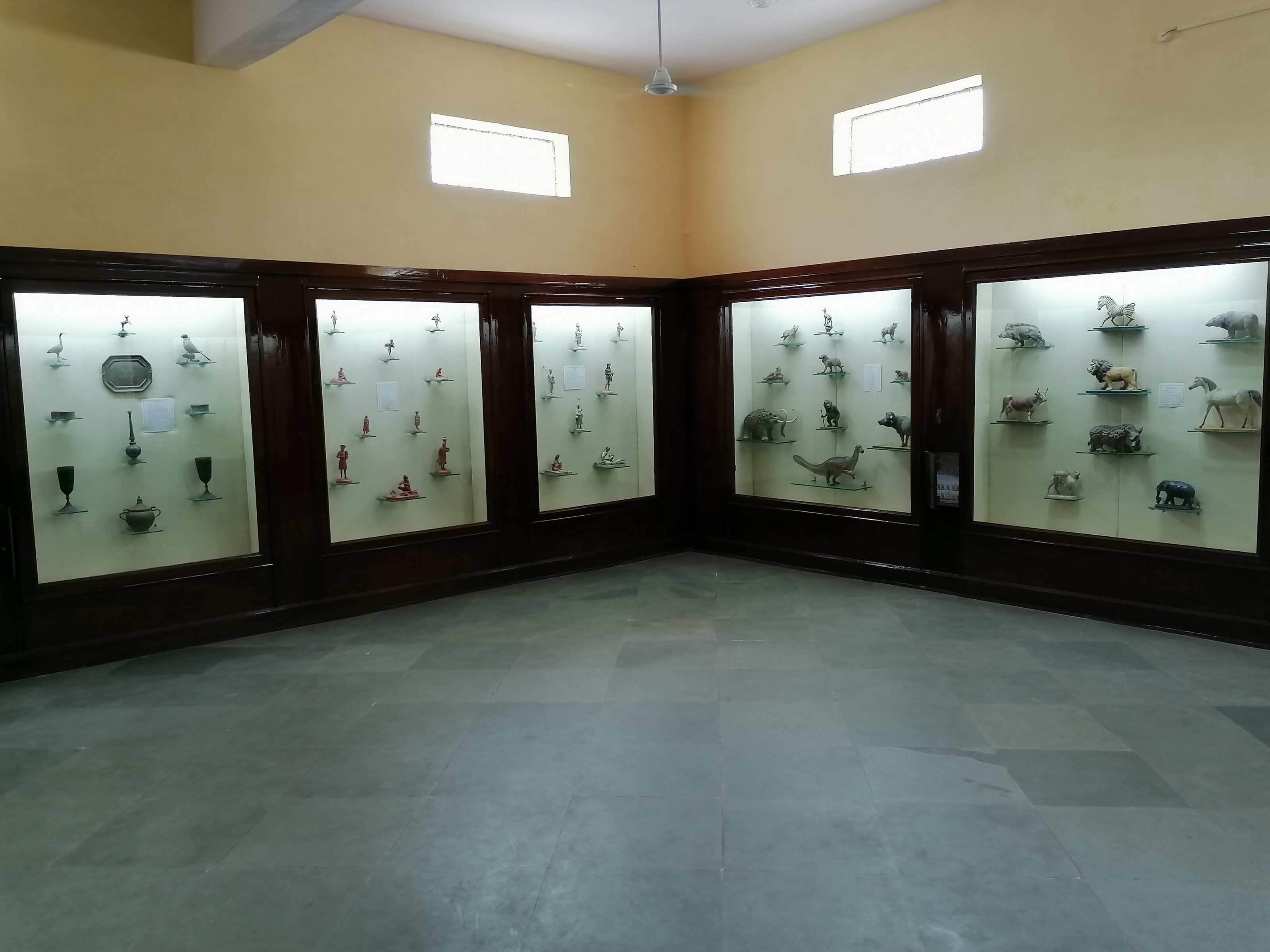
There are displays from various parts of India including stone idols, Bikaner lacquer work vases, Jaipur blue pottery, metal art, clay models of professions and ascetics from West Bengal and mehndi designs on hands and feet.
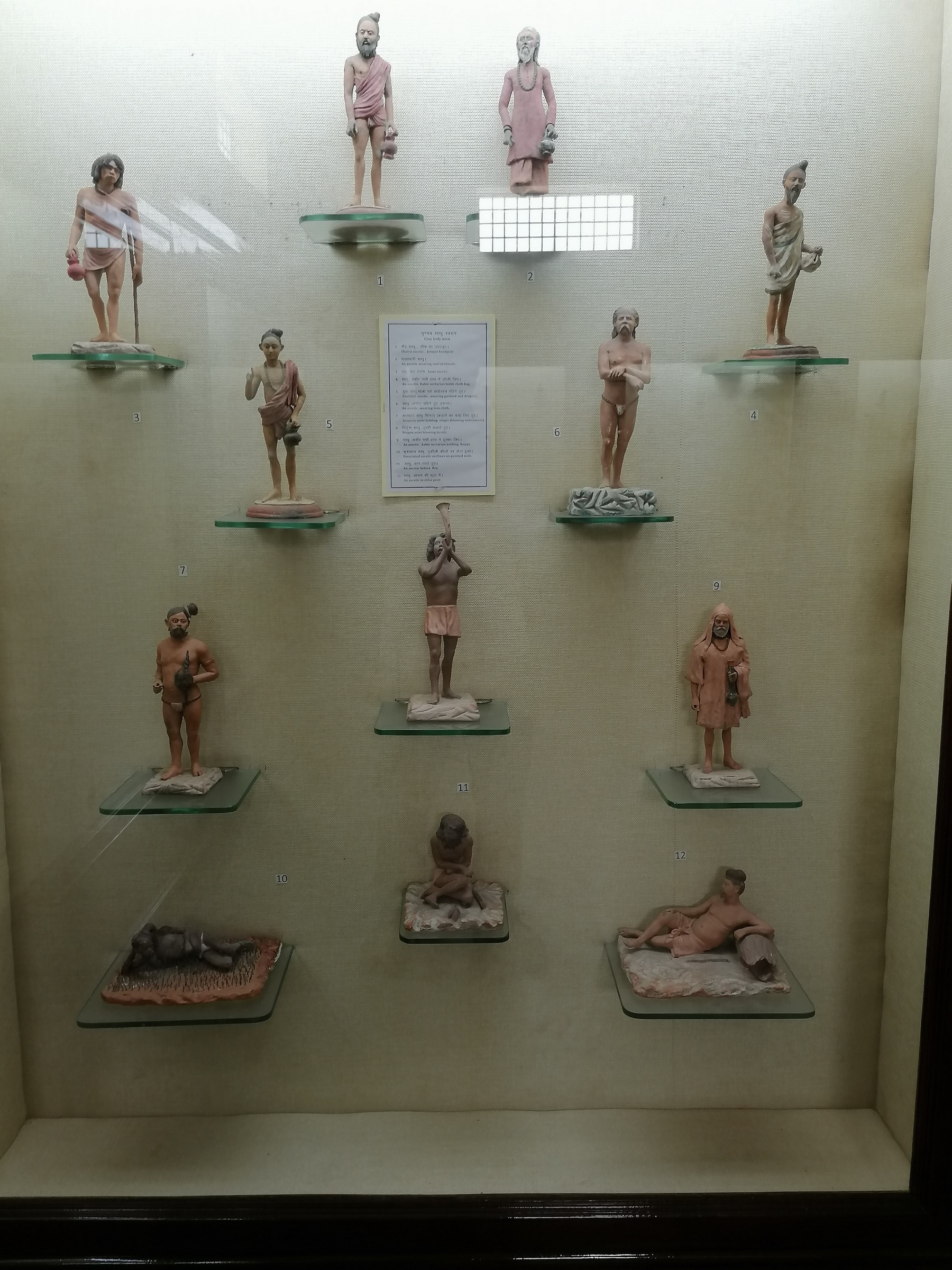
These clay models of ascetics and sadhus were made in West Bengal.
Beautifully executed mehndi designs on hands.
Saharia woman in traditionally block printed outfit using natural dyes. Baran is still a centre for dyeing and printing and the Chippa community used to be famous for their bandhej work (tye and die tiny circles). Mangrol in Baran district is still a centre for handloom Kota Doria cloth.
A composite three-headed Vishnu, Brahma and Shiva with Surya shown in the form of sun-shaped rosettes. 12th century from Vilas (Tehsil Kishanganj)
This interesting 11th-century sculpture showing the Goddess Ambika holding a branch of mangoes in her right hand and her child on her left while sitting on a lion is recognised by both Jains and Hindus. For Hindus, Ambika is one of the 108 avatars of Durga, Mother of the Universe, who represents the infinite power of the universe and is a symbol of a female dynamism. For Jains, Ambika is a Yakshi who is the attendant of Lord Neminath, the 22nd Thirthankara. She is worshipped as the Mother Goddess of Jainism and is regarded as the patron deity of material prosperity and childbirth. She represents fertility and can protect against the evil forces of nature.
This interesting 11th-century sculpture showing the Goddess Ambika holding a branch of mangoes in her right hand and her child on her left while sitting on a lion is recognised by both Jains and Hindus. For Hindus, Ambika is one of the 108 avatars of Durga, Mother of the Universe, who represents the infinite power of the universe and is a symbol of a female dynamism. For Jains, Ambika is a Yakshi who is the attendant of Lord Neminath, the 22nd Thirthankara. She is worshipped as the Mother Goddess of Jainism and is regarded as the patron deity of material prosperity and childbirth. She represents fertility and can protect against the evil forces of nature.
Foreign National Adults: Rs. 100 Foreign National Children over 7: Rs. 50
• Walking distance from the bus station and Baran train station.
• Jaipur airport is 257kms and Gwalior airport is 274 kms
2. Some sculptures are from Bilasgarh which was once a fine city but was destroyed on the orders of Emperor Aurangzeb after a Khechi princess from the ruling family of Bilasgarh refused to marry him and preferred suicide. The spot near the Bilas River where she ended her life is called Kanya Dah, near Vilasgarh a treeless desolate place strewn with rubble about 32kms from Baran.
3. The Saharia tribe are based in Baran district and have suffered from poor access to education, health and finance. They are represented in the museum by a couple in the folklore gallery dressed in traditional clothes.
